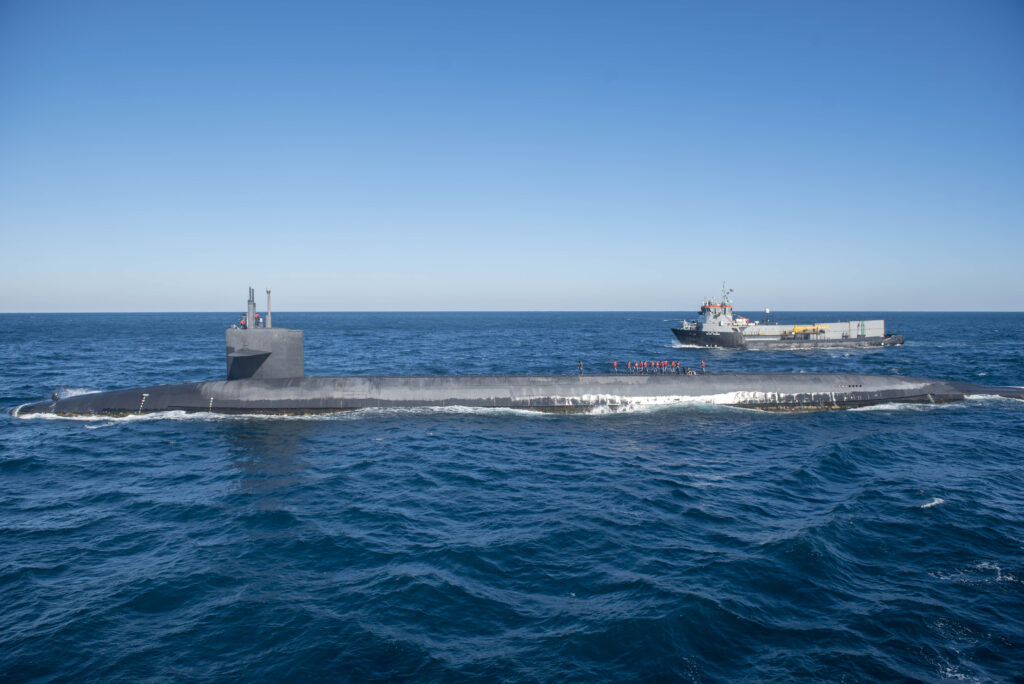
ARLINGTON, Va. — The U.S. Navy admiral in charge of procuring and sustaining the Navy’s ballistic-missile submarines (SSBNs) said the Navy is studying possible short service-life extensions of some Ohio-class SSBNs and even the Ohio-class guided-missile submarines.
The Ohio-class SSBNs are scheduled to be replaced by the Columbia-class SSBNs now under construction. The first Columbia SSBN is scheduled to be on patrol in fiscal 2031 in order to maintain the undersea leg of the nation’s nuclear deterrent force. The margin available in the schedule for the Columbia program is tight.
“Because it is the prudent thing to do, we are evaluating potential — not class extensions — but individual hull extensions for up to five of our Ohio-class SSBNs,” said Rear Adm. Scott Pappano, the program executive officer for strategic submarines, speaking May 12 in a webinar of the Advanced Nuclear Weapons Alliance Deterrence Center.
The Ohio-class SSBNs were built for 30-year service lives, which were lengthened to 42 years through an extension program.
“It’s very hard to get past 42 years,” Pappano said. “We’re going to at least evaluate that in the background. The first time we’d actually have to start thinking about doing that — to actually do one — would be in the FY29 time frame. So, we’re doing the evaluations right now on what it would take to do a ‘shortish’ repair availability to extend those ships for a couple of years as a risk mitigator, if need be. My goal is to not have to do that, but we want to understand the opportunities and risks associated with that short extension of the Ohio if we need to go do that, depending on what the world situation looks like at the end of the ‘20s and into the ‘30s.”
The admiral said the Ohio class has been upgraded with a modernized Strategic Weapon System and COTS [commercial-off-the-shelf] systems and sensors.
“That class is doing very, very well,” he said.
Pappano also said that “as part of that we’ll also evaluate the SSGNs [Ohio-class guided-missile submarines] right now. That’s a bit more of a challenge because those ships are operated vigorously than the SSBNs are in the current roles they have right now, but we will continue to look forward to doing that.
“Eventually, the Virginia-class [SSN] VPM [Virginia Payload Module] capability will supplant much of that [SSGN] missile inventory,” he said. “Until that comes online, we want to make sure we have the missile shooter capability in the SSGNs for as long as we can, but it’s going to be a delicate balancing act of maintaining the current SSBN fleet versus extending the SSGN fleet. One of the things we’re looking at right now as we go forward is to make sure we provide as much capability to the warfighters as we can at the right amount of risk.”
- Insitu Going Strong at 30, Focusing on Maritime Operations - April 8, 2024
- Navy Awards Boeing Additional Funds for MQ-25 Drones for Testing - April 3, 2024
- Benign 4th Fleet AOR Useful for Unmanned Vehicle Operationalization, Admiral Says - March 27, 2024






